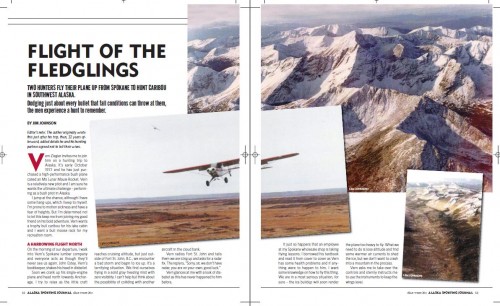Island Time Is Hard For Returning Mountain Goat Hunters
The following appears in the January issue of Alaska Sporting Journal:
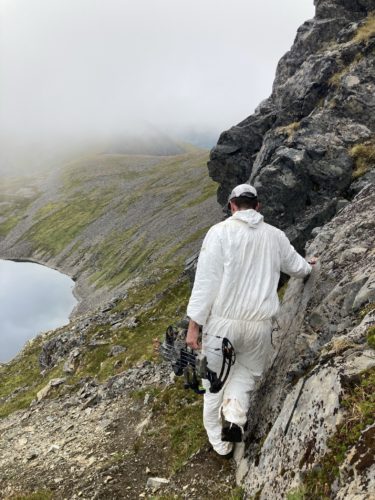
BY BRIAN WATKINS
In 2020 I was lucky enough to be part of a successful archery goat hunt in which good friend Trevor Embry and I went two for two on billies.
We knew luck had been on our side then (Alaska Sporting Journal, December 2020), so we decided to try again this past year. We switched from hunting the rugged country of Southeast Alaska to the more forgiving mountains of Kodiak Island. That’s not to diminish the severity of Kodiak’s mountains, but we expected it to be a less physically demanding experience as we prepared for this latest adventure.
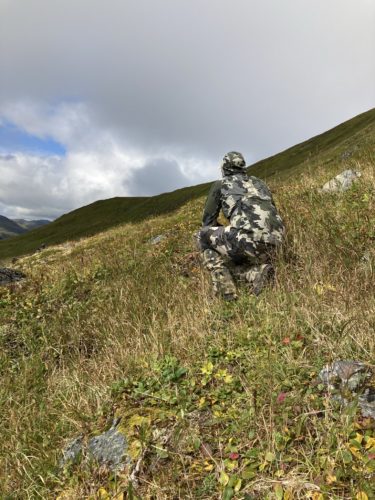
WE FLEW OUT OF Kodiak City with Island Air to the southern hunting unit. We had picked out three different lakes as possible dropoff points. The weather on Kodiak is unpredictable and often harsh, so it’s best to always have backup options. We wanted to land on a lake above 1,500 feet so we would avoid the brush of the low country.
Granted, doing it that way means that getting dropped off or picked up is a coin flip. And the odds are seemingly less than 50/50. Options can be picked based on other camps already hunting, clouds, wind and rain.
We were able to be dropped off at our third lake of choice. There was heavy cloud cover and one quick opening above the lake we had picked out. You can’t hunt goats in Alaska on the same day as you fly in, so we were set to make a game plan the day we landed.
There are really two goat-hunting scenarios where you can tilt the odds of success a little more in your favor. The first is to sit and watch the goats and their daily rituals.
In the darkness, the animals will bed just above the feeding ground to get away from predators. In the morning, they feed back down for the first hour or two of the day. Then they will migrate back to their high perch and sit for the day.
Goats are lazy animals for most of the day, laying in the same area until it’s time to feed again. I would say their path of travel between feeding and bedding is slightly adjusted based on weather.
Billies tend to hang out in smaller groups, making it easier for them to get between feeding and bedding areas. If you’re archery hunting and want better odds of success, I suggest watching for a
minimum of two days before making the move to intercept. That is what we did.
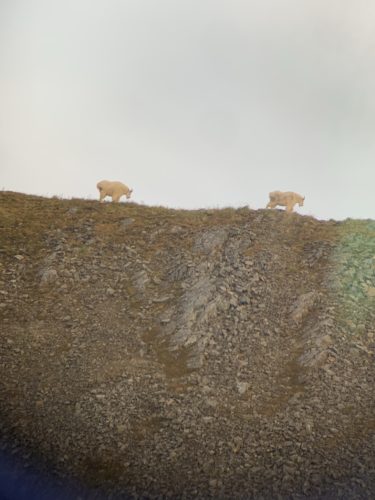
WITH ANY HUNT, THE odds are stacked against you. As famed archer Jack Frost says, hunting with a bow starts where hunting with a rifle ends. And closing that last 200 to 300 yards to get in bow range drops your odds considerably. We watched on the third day as Trevor snuck into his intercept point once two billies left their feeding area to bed for the day.
He made his play as the goats walked back to their high point. As Trevor went into position with a goal of intercepting the billies at their evening feeding grounds, I went to hunt a different area.
Eight long hours later, I was across the valley watching as the goats fed directly to Trevor. It was like watching a live TV hunting show as the two billies fed directly at him.
As they closed the distance, I felt the hair stand up on the side of my neck due to a shift in wind. As the goats got to 100 yards, that wind also betrayed Trevor’s position and he was caught. The billies fled the area and headed right back to their bedding ground. If he had been hunting with a rifle, it would’ve been a sure thing. But with a bow, the odds are against you tenfold.
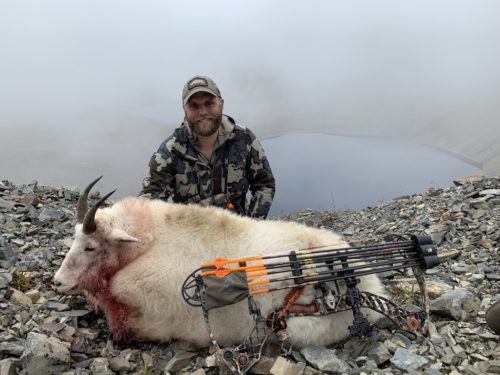
AFTER A DAY OF sitting and waiting, Trevor was ready to try goat hunting option two. This is my favorite way, as my patience would not have lasted all those eight hours. You stalk into the goats while they’re in their bedding area. The key to this is to use the wind in your favor and stay out of sight.
The good thing about goats is they like to hang out in the gnarliest of terrain. That also provides a lot of features to hide behind. On this stalk, the goats were bedded in a banana-shaped valley. Where they were perched, they could see the entire bottom and other side, as the bend of the valley had a slight curve to it. We planned to go up the far side and hoped to hide as much as possible.
Luck was on our side. It was a partly cloudy day and the fog was dropping and lifting into the valley consistently. As the fog dropped, we moved. We were able to get on the ridge using this technique and get out of sight of the two billies.
The wind was in our favor as well, blowing from the two goats back to us. We took our time and used the mountain to hide our movement.
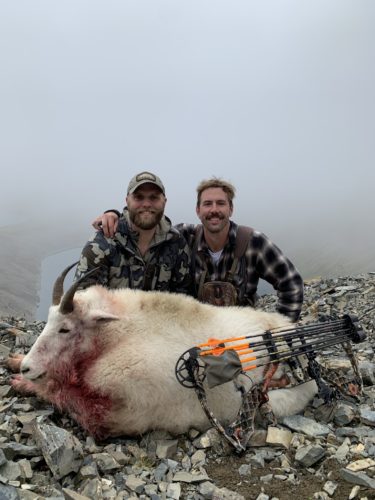
As we closed in, we ranged one of the billies at 95 yards. He was behind a small rock, but it allowed us to get all the way down to 18 yards. Trevor made a perfect shot and was successful in taking another goat.
We ended up going two for two billies again, with three deer to boot. It was another successful archery goat hunt. Let’s hope for another great one in 2022! ASJ

